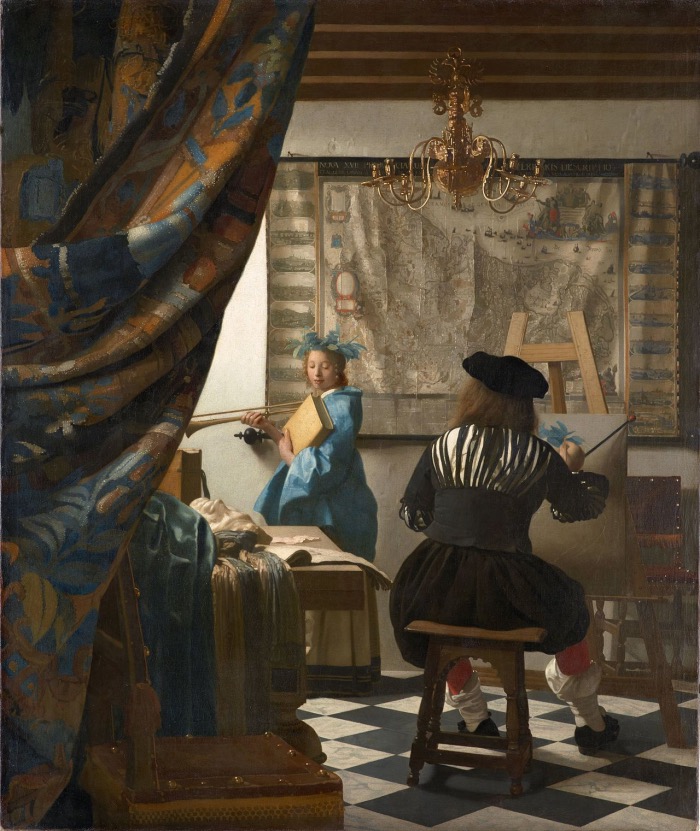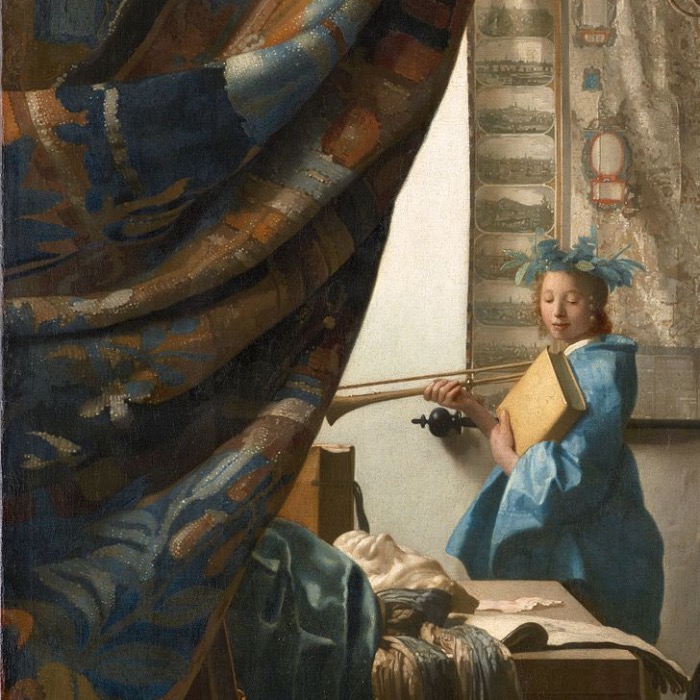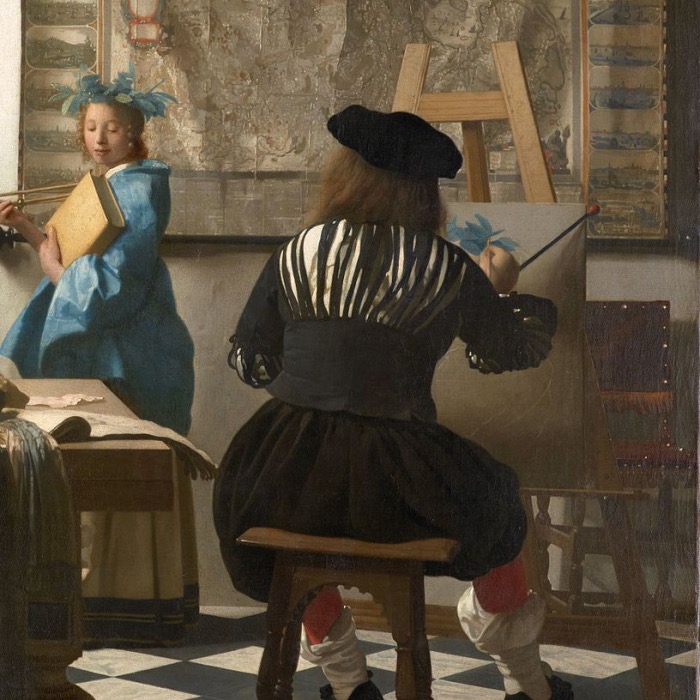
Allegory of Painting
THE ALLEGORY OF PAINTING BY VERMEER: DESCRIPTION AND ANALYSIS
Do you know The Allegory of Painting by Vermeer ? The artist never parted with this work and his wife didn’t succeed in keeping it with her.
The reasons are not clear, but it’s possible to formulate some hypotheses and hold this painting as a heirloom.
I had the chance to admire this painting at the Kunsthistorisches Museum in Vienna, many years ago.
I’ve already written a post about Vermeer’s works containing also this painting today I want to examine in depth.
The Allegory of Painting by Vermeer

Catharina Bolnes was Vermeer’s wife and when her husband died, she bequeathed a painting entitled “The Art of Painting to her mother in order to pay off some debts.
Art historians have always identified the painting described in a document of 1676 as The Allegory of Painting by Vermeer, on display at Kunsthistorisches Museum in Vienna, and they all agree that the transfer of the painting was actually an attempt to save it from a sale auction of all family assets.
STORY OF THE ALLEGORY OF PAINTING BY VERMEER
Little is known about Vermeer’s life, but we know for certain that the artist died suddenly at the age of 43, leaving his wife and several children in a bad financial situation.
His wife had to declare bankruptcy and, although a bankruptcy receiver was entrusted with solving the situation, Catharina tried in any way to save as many assets as possible from the sale auction, including the painting The Allegory of Painting by Vermeer.
However, Vermeer’s wife didn’t succeed in avoiding the sale of the painting. The buyer is unknown, but what is certain is that the work had remained in the artist’s studio for years and he never parted with it, until he was alive. It had probably great significance for him, and maybe depicts the artist himself from behind while portraying his wife, his daughter or a model.
DESCRIPTION OF THE ALLEGORY OF PAINTING BY VERMEER
In The Allegory of Painting by Vermeer the painter himself is portrayed sitting in front of an easel while painting. His model is standing by a window, lit by natural light, and wears a light-blue dress.
The girl wears a laurel wreath and holds a trumpet in one hand and a book in the other. All the elements suggest that she might represent the allegorical figure of Fama or Clio, the Muse of History.
The curtain on the left looks like a curtain opening on the artist’s everyday life.
The map in the background, instead, is precise and detailed, and underlines Vermeer’s ability to paint light effects.
Vermeer is said to be the painter of light, but I believe that he looked for colour and especially balance.

Allegory of painting

